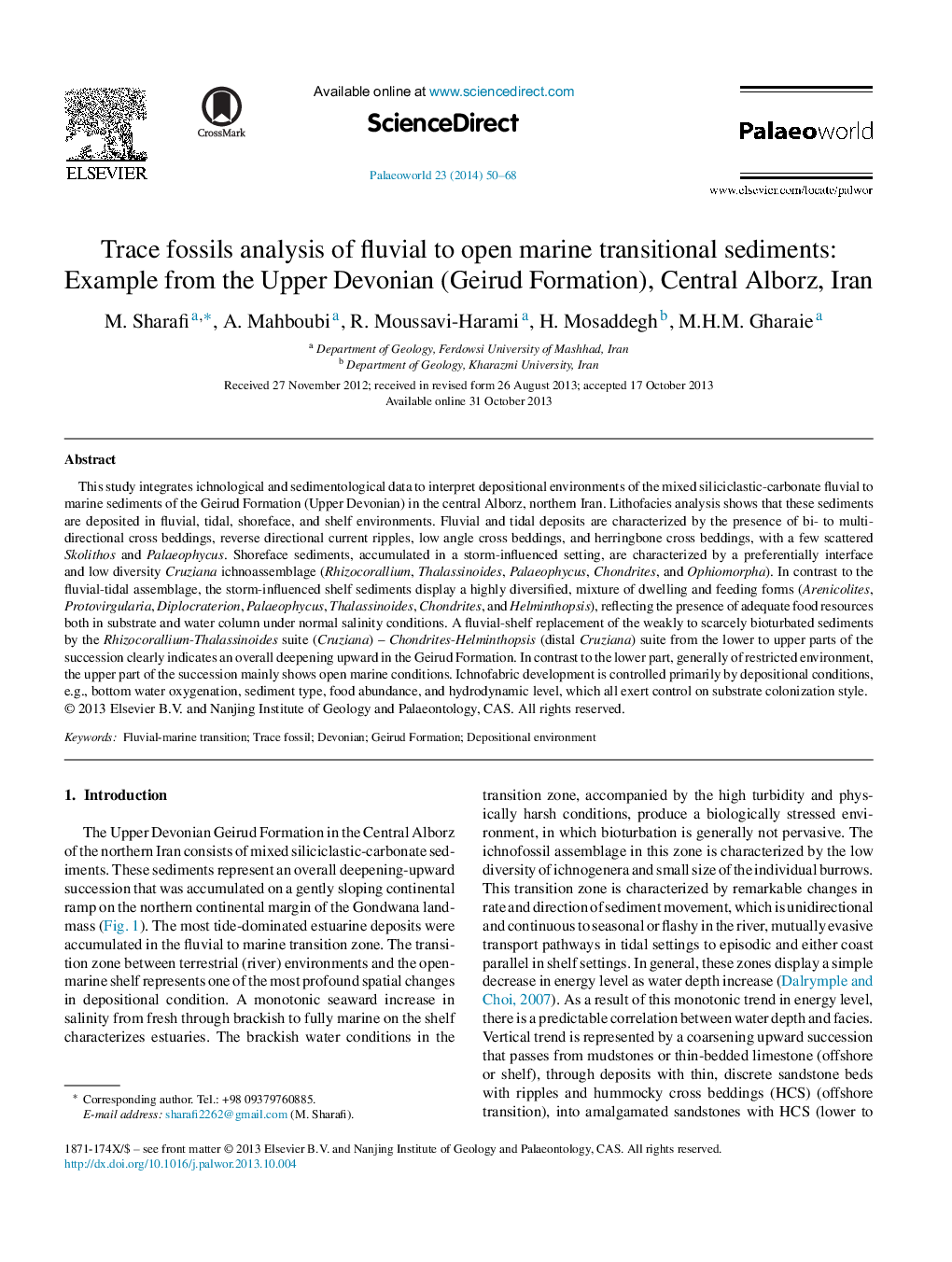| کد مقاله | کد نشریه | سال انتشار | مقاله انگلیسی | نسخه تمام متن |
|---|---|---|---|---|
| 4749677 | 1360608 | 2014 | 19 صفحه PDF | دانلود رایگان |
This study integrates ichnological and sedimentological data to interpret depositional environments of the mixed siliciclastic-carbonate fluvial to marine sediments of the Geirud Formation (Upper Devonian) in the central Alborz, northern Iran. Lithofacies analysis shows that these sediments are deposited in fluvial, tidal, shoreface, and shelf environments. Fluvial and tidal deposits are characterized by the presence of bi- to multi-directional cross beddings, reverse directional current ripples, low angle cross beddings, and herringbone cross beddings, with a few scattered Skolithos and Palaeophycus. Shoreface sediments, accumulated in a storm-influenced setting, are characterized by a preferentially interface and low diversity Cruziana ichnoassemblage (Rhizocorallium, Thalassinoides, Palaeophycus, Chondrites, and Ophiomorpha). In contrast to the fluvial-tidal assemblage, the storm-influenced shelf sediments display a highly diversified, mixture of dwelling and feeding forms (Arenicolites, Protovirgularia, Diplocraterion, Palaeophycus, Thalassinoides, Chondrites, and Helminthopsis), reflecting the presence of adequate food resources both in substrate and water column under normal salinity conditions. A fluvial-shelf replacement of the weakly to scarcely bioturbated sediments by the Rhizocorallium-Thalassinoides suite (Cruziana) – Chondrites-Helminthopsis (distal Cruziana) suite from the lower to upper parts of the succession clearly indicates an overall deepening upward in the Geirud Formation. In contrast to the lower part, generally of restricted environment, the upper part of the succession mainly shows open marine conditions. Ichnofabric development is controlled primarily by depositional conditions, e.g., bottom water oxygenation, sediment type, food abundance, and hydrodynamic level, which all exert control on substrate colonization style.
Journal: Palaeoworld - Volume 23, Issue 1, March 2014, Pages 50–68
